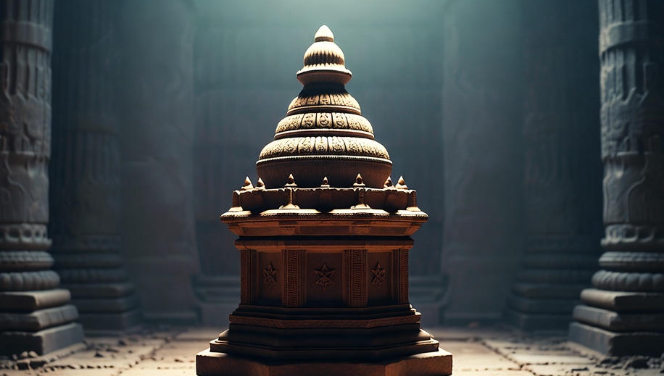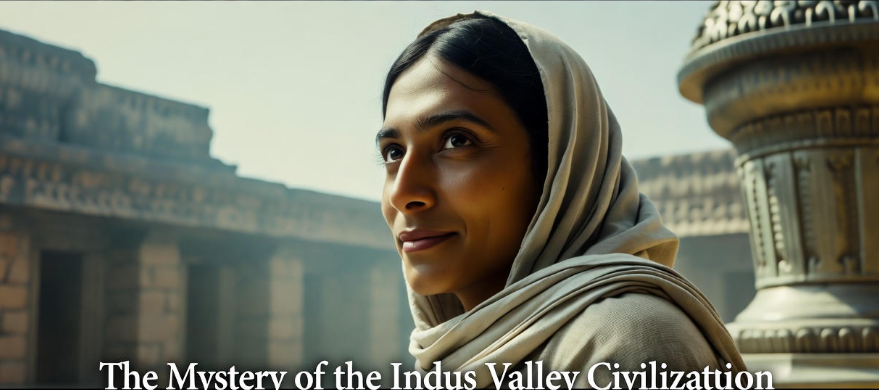When we talk about the oldest and most fascinating civilizations of the world, the Indus Valley Civilization always finds its place among the top. It’s mysterious, advanced, and full of secrets that continue to baffle historians even today. Despite existing thousands of years ago, their achievements in city planning, trade, and technology still leave us in awe. But what makes it truly fascinating is how little we actually know about the people who built it.
A Civilization Lost in Time
Imagine a civilization that flourished around 2500 BCE — long before Greece or Rome — in what is now Pakistan and northwest India. The Indus Valley Civilization, also known as the Harappan Civilization, spread across an enormous area, almost 1.25 million square kilometers! That’s larger than ancient Egypt and Mesopotamia combined.
The people of this civilization lived along the Indus River and its tributaries. The main cities — Harappa, Mohenjo-Daro, Dholavira, and Lothal — were examples of extraordinary urban design. These weren’t just small towns; they were massive, well-planned cities with straight roads, drainage systems, and brick houses. Think about it — this was around 5,000 years ago, and yet they had public baths, granaries, and even private wells.
Life in the Indus Cities 🏙️
What makes the Indus people so impressive is how organized they were. The city layouts looked like they were drawn by modern architects — a perfect grid pattern with wide main roads and smaller side streets. Every house was made of baked bricks, something very rare for that time.
And hygiene? They were probably more advanced than many later civilizations. Almost every house had access to water, and there were covered drains running along the streets. Archaeologists even found complex sewage systems — something the Romans wouldn’t invent until thousands of years later.
Inside their homes, people used pottery, bronze tools, and jewelry made from gold and semi-precious stones. They also had weights and measures, showing that trade and economy were highly organized.
Here’s a quick look at some of their everyday achievements:
| Aspect | What They Achieved |
|---|---|
| Urban Planning | Grid-based city layout with drainage |
| Architecture | Uniform baked brick houses |
| Trade | Local and international trade via river and sea |
| Technology | Use of bronze, pottery wheels, and standardized weights |
| Hygiene | Advanced sewage and water systems |
Their Trade and Connections 🌍
The Indus people weren’t isolated. Evidence shows they traded with Mesopotamia (modern-day Iraq). Seals found in Mesopotamian cities have symbols similar to those of the Indus Valley. They exported goods like beads, cotton, and ivory, and imported silver, tin, and precious stones.
Their port city, Lothal, is considered one of the earliest dockyards in the world. The people knew about tides and built a dock that could control water flow — truly a remarkable feat for such an ancient time.
The Writing That No One Can Read ✍️
Perhaps the biggest mystery of all is their writing system. Archaeologists have found thousands of seals and inscriptions, but no one has been able to read them yet. The Indus script remains undeciphered.
Why? Because the inscriptions are short — just 4 to 6 symbols long — making it hard for linguists to identify patterns. We don’t know if it was a full language or just symbols used for trade and religion. Imagine if we could read it — we’d finally know what they called themselves, what they believed in, and how they governed their society.

No Kings, No Palaces, No Wars? 🏛️
Unlike Egypt or Mesopotamia, the Indus cities don’t show signs of large palaces, temples, or royal tombs. There are no grand monuments or statues of kings. This suggests that maybe they had a more equal society — possibly run by local leaders or councils.
Even more surprising, there’s almost no evidence of warfare. No weapons of mass destruction, no fortresses for defense, and no artwork showing battles. It seems the people of the Indus Valley preferred peace and trade over war and conquest.
Religion and Beliefs 🙏
Since we can’t read their script, we can only guess their beliefs from artifacts. Archaeologists found terracotta figurines of women that might represent a mother goddess — suggesting they worshipped fertility. Some seals also show a figure sitting cross-legged surrounded by animals — perhaps an early form of Lord Shiva (known as Pashupati).
Trees, animals, and nature seemed sacred to them. They might have followed rituals that honored natural elements, but since we have no temples or texts, their religion remains mostly a mystery.
The Great Bath of Mohenjo-Daro 🛁
One of the most iconic structures found is the “Great Bath” in Mohenjo-Daro. It’s a large rectangular pool made of baked bricks and waterproofed with natural tar. Steps lead down into it, and nearby rooms suggest it was used for ritual bathing or purification.
This shows that cleanliness wasn’t just practical — it had spiritual importance too. Some even call it the world’s first public swimming pool!
How Did It All Disappear? 🌪️
Every great civilization has its rise and fall, and the Indus Valley was no different. But here’s the strange part — no one really knows how it ended. Around 1900 BCE, cities started being abandoned.
There are several theories:
-
Climate Change: The Indus River might have shifted or dried up, leading to droughts.
-
Floods: Evidence of repeated floods in Mohenjo-Daro suggests nature’s fury played a role.
-
Invasions: Some believe Indo-Aryan tribes invaded from the north, though proof is limited.
-
Trade Collapse: As Mesopotamia declined, the Indus trade network may have broken down.
Whatever the reason, the civilization faded away quietly. The people migrated east, blending into smaller villages along the Ganges. Their script vanished, their cities crumbled, but their legacy lived on.
What Archaeology Reveals (and Hides) 🏺
Over the years, archaeologists have uncovered thousands of artifacts — from jewelry to toys, seals to skeletons — yet each discovery only deepens the mystery. For example, the famous “Dancing Girl” statue made of bronze shows how skilled their artists were. The “Priest-King” figure from Mohenjo-Daro hints at leadership, though we still don’t know his exact role.
Interestingly, the lack of large weapons or evidence of violence shows they were perhaps one of the most peaceful ancient societies.
Modern Lessons from an Ancient Civilization 🌱
The Indus Valley people lived sustainably. They respected their environment, built durable structures, and managed water efficiently. In an age of pollution and overpopulation, we could learn a lot from them — especially about urban planning and community living.
Their cities remind us that progress doesn’t always mean towering buildings or empires; sometimes, it’s about harmony, balance, and smart living.
Why the Mystery Still Matters 🧩
Even though the civilization vanished over 4,000 years ago, it continues to inspire scientists, historians, and curious minds. The unsolved script, the peaceful society, the silent cities — all make it one of the greatest enigmas of human history.
Every few years, new excavations bring us closer to understanding them — yet never quite close enough. Maybe one day we’ll decode their language or uncover a text that explains it all. Until then, the Indus Valley Civilization remains a puzzle that whispers stories from the past.
Quick Summary Table
| Feature | Description |
|---|---|
| Location | Present-day Pakistan and northwest India |
| Time Period | 2600–1900 BCE |
| Major Cities | Harappa, Mohenjo-Daro, Dholavira, Lothal |
| Economy | Agriculture, trade, handicrafts |
| Language | Undeciphered script |
| Governance | Possibly local or community-based |
| Religion | Nature worship, fertility symbols |
| Reason for Decline | Possibly climate change, floods, or trade collapse |
Frequently Asked Questions (FAQs)
Q1: What was unique about the Indus Valley Civilization?
It was one of the earliest and most advanced urban civilizations, known for its planned cities, drainage systems, and peaceful nature — all without kings or wars.
Q2: Why can’t we read their language?
The script has never been fully deciphered because inscriptions are too short, and we lack a bilingual text (like the Rosetta Stone) to decode it.
Q3: Did they have any form of religion?
Yes, evidence suggests they worshipped nature, fertility, and possibly deities resembling later Hindu gods.
Q4: What caused their decline?
Theories include river shifts, droughts, floods, or the decline of trade with neighboring regions. However, there’s no single confirmed reason.
Q5: What can we learn from them today?
Their focus on hygiene, sustainable living, and city planning can inspire modern urban designs that value balance and eco-friendliness.
Final Thoughts 🌿
The Indus Valley Civilization wasn’t just another chapter in history — it was a masterpiece of human intelligence and cooperation. Its peaceful nature, scientific planning, and mysterious disappearance continue to capture our imagination.
Somewhere beneath the sands of Pakistan and India still lie secrets waiting to be uncovered. And maybe, just maybe, one day we’ll finally hear the voices of the people who built those silent, perfect cities.

Leave a Reply